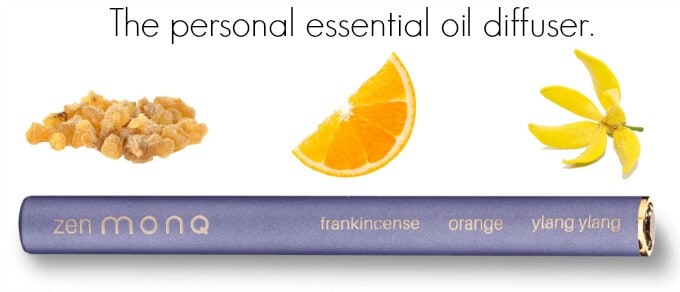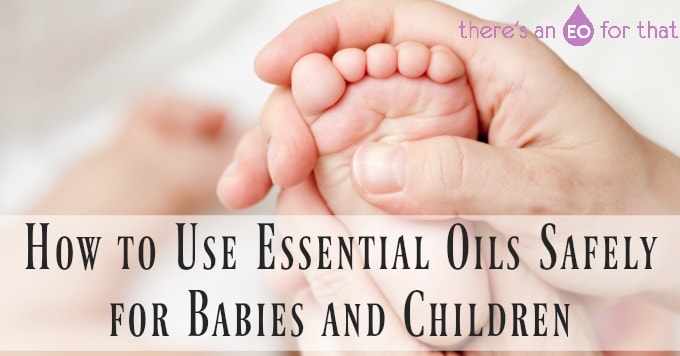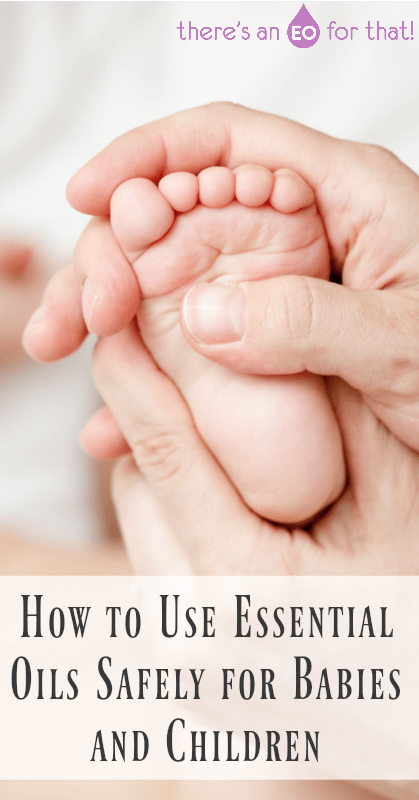Using essential oils safely is not only important for adults but especially so for babies and children. As parents, the path to a more holistic and natural lifestyle can often mean navigating most ailments on your own or through the wisdom of others. Sometimes this can be really tricky! Some say EVERY oil is safe while others say NOTHING is safe to use on our little ones.
It’s all very confusing with all this conflicting information floating around isn’t it? The rule of thumb is, using plant medicine in any form is different for children than it is for adults including the safe use of essential oils. This doesn’t mean however, that essential oils can’t be used. You just need a little know how, some healthy respect, and have plenty of resources you trust to learn from.
No matter where you source your high quality essential oils, one thing is true across the board. These essences are highly concentrated and demand respect when using them. Just because lavender is a very safe oil does not mean it’s a good idea to just slather it on. Essential oils are potent, powerful, and therapeutic in nature and require a bit of foresight especially when they’re being used for infants and children.
Just to make sure that you’re using the right essential oils listed below, I have included the botanical name for easy and hassle free reference. And in case you’re wondering where I got this information, I’ve cited a book called Essential Oil Safety by Robert Tisserand and Rodney Young which is considered the most evidence-bases essential oil resource out there. It has over 4,000 citations and took over 10 years to compile into this massive “worth its weight in gold” volume. I highly recommend getting a copy. You won’t need anything else.
How to Use Essential Oils Safely for Babies and Children
Before we get to the oils, here are a few key points to follow when using essential oils on or around infants and young children, so please read these first.
1. According to Robert Tisserand, children should never ingest essential oils as certain oils can be toxic if ingested.
2. Essential oils should be stored carefully and out of reach of children just like other medicines and household chemicals.
3. If your child does ingest an essential oil, it’s important to NOT induce vomiting and to contact your child’s doctor unless signs of poisoning are present. Be sure to bring the essential oil bottle with you to the emergency room.
4. All essential oils must be diluted for use in babies and children. Never apply them neat. You can use a carrier oil like sweet almond oil, fractionated coconut, grapeseed oil etc. You can also use vegetable glycerin or raw honey (only use raw honey on children 1+ years).
5. Avoid using essential oils on mucus membranes in babies and children and keep essential oils away from the face in general.
6. It’s important to introduce one essential oil at a time in small amounts to avoid any allergic/adverse reactions. Keep it to no more than one new essential oil in one day and watch for signs of a reaction after application. Reactions generally take about 15-30 minutes to show after inhalation or topical application.
7. Use your best judgement when choosing essential oils for your child and do thorough research on those oils and their source before using them. I recommend picking up a copy of Essential Oil Safety by Robert Tisserand and Rodney Young to get you started.
8. It is not advisable to use essential oils on children less than 3 months old because their skin is more permeable and not yet fully developed. Newborns are also unable to process and detox an allergic/adverse reaction that may be caused by essential oils.
9. Do not use essential oils on premature babies. A hydrosol or tea would be a much gentler and safer option to consider. Again, be careful of allergies.
10. If a recipe calls for essential oils that come from spices, opt for using less as those oils can be “hot” and irritating for the skin. Examples include clove, cinnamon, oregano, ginger, black pepper, thyme, marjoram, rosemary, and many more. I have put the words “diffuse more” after the names of oils that are considered “hot”. I recommend diluting these to half the recommended strength in any given recipe.
11. When diffusing essential oils for children, opt for no more than 3-5 drops of essential oil at a time and use only a single oil at first until you know how your child reacts. Only introduce one new oil at a time. Diffuse for 15-20 minutes twice a day.
12. Use essential oils only from sources you trust with your child’s health. Some of my favorite brands to consider include: Mountain Rose Herbs, Eden Botanicals, Plant Therapy, Young Living, DoTerra, Wyndmere, Vitality Works, Aura Cacia, Simplers Botanicals, Vibrant Blue, Native American Nutritionals, and Rocky Mountain Oils. Do your own research!
I’ve tried my best to list as many essential oils as possible that are safe for use on infants and children below. Just know that this is not a definitive list so if you have others that you would like me to look into and add, please let me know in the comments!
How to Use Essential Oils Safely for Babies and Children 3+ Months
The maximum recommended amount of essential oils on babies and children 3+ months should not exceed .2% of a given recipe. For reference, this would be 1-2 drops of essential oil per 1oz of carrier oil, glycerin, etc.
Blue Yarrow (Achillea millfolium)
Dill (Anthum graveolens)
German and Roman Chamomile (Matricaria rectutita, Anthemis nobilis)
Lavender (Lavendula angustifolia)
How to Use Essential Oils Safely for Babies and Children 6+ Months
The maximum recommended amount of essential oils used on children 6+ months should not exceed .5% of a given recipe, i.e. 3-5 drops of essential oil per 1oz of carrier oil, glycerin, etc.
Atlas or Virginia Cedarwood (Cedrus atlantica, Cedrus deodora, Juniperus virginiana) – dilute more
Bergamot (Citrus bergamia) – Bergapten free only as using regular bergamot essential oil is extremely phototoxic. (you can learn more about phototoxic essential oils here.)
Carrot Seed (Daucus carota)
Cinnamon Bark (Cinnamomum verum) – safe for diffusion only.
Cinnamon Leaf (Cinnamomum verum) – dilute more
Citronella (Cymbopogon nardus) – dilute more
Coriander (Coriandrum sativum)
Cypress (Cupressus sempervires)
Fir Needle (Abies sibirica)
Geranium (Pelargonium graveolens, asperum)
Grapefruit (Citrus paradise)
Helichrysum (Helichrysum angunstifolium, italicum)
Lemon (Citrus limon) – use steam distilled to avoid phototoxicity in the sun
Mandarin (Citrus reticulate)
Neroli (Citrus aurantium)
Palma Rosa (Cymbopogon martinii)
Petitgrain (Citrus aurantium)
Pine (Pinus divaricate, resinosa,strobus, and sylvestris) – dilute more
Ravensara (Ravensara aromatica)
Rosalina (Melaleuca ericifolia)
Rose Otto (Rosa damascena)
Sandalwood (Santalum spicatum)
Spruce (Picea abies, glauca, mariana, and rubens)
Sweet Orange (Ctrus sinensis)
Tangerine (Citrus reticulate)
Tea Tree (Melaleuca alternifolia)
How to Use Essential Oils Safely for Babies and Children 2+ Years
The maximum amount of essential oil used on children 2+ years should not exceed 2% of a given recipe, or 20 drops of essential oil per 1oz of carrier oil, glycerin, raw honey, etc.
Basil, Lemon (Ociumum x citriodorum)
Basil, Sweet (Ocimum basilicum)
Benzoin (Styrax benzoin, Styrax paralleloneurus)
Black Pepper (Piper nigrum) – dilute more
Blue Tansy (Tanacetum annuum) – aka Moroccan blue chamomile
Cassia (Cinnamomum cassia) – Diffused only
Catnip (Nepeta cataria)
Clary Sage (Salvia sclarea)
Clove Bud (Syzygium aromaticum, Eugenia aromatica, Eugenia caryophyllata) – dilute more
Copaiba Basalm (Copaifera officinalis)
Frankincense (Boswellia carterii)
Garlic (Allium sativum) – Diffuse only
Ginger (Zingiber officinale) – dilute more
Hyssop (Hyssopus officinalis)
Jasmine (Jasminum sambac)
Juniper Berry (Juniperus communis)
Lavandin (Lavandula x intermedia)
Lemongrass (Andropogon citratus, Andropogon flexuosus, Cymbopogon citratus, Cymbopogon flexuosus) – dilute more
Lime (Citrus x aurantifolia)
May Chang (Litsea cubeba, citrate)
Melissa/Lemon Balm (Melissa officinalis)
Myrrh (Commiphora myrrha)
Oakmoss (Evernia prunastri)
Opopanax (Commiphora guidottii)
Oregano (Origanum onites, Origanum smyrnaeum, Origanum vulgare, Origanum compactum, Origanum hirtum, Thymbra capitata, Thymus capitatus, Coridothymus capitatus, Satureeja capitata)
Patchouli (Pogostemon cablin)
Spearmint (Mentha cardiaca, Mentha spicata)
Sweet Marjoram (Marjorana hortensis)
Tea Tree, Lemon (Leptospermum petersonii, Leptospermum citratum, Leptospermum liversidgei)
Thyme (Thymus vulgaris, Thymus Zygis) – dilute more
Tumeric (Curcuma longa)
Valerian (Valeriana officinalis)
Vanilla CO2 (Vanilla planfolia)
Verbena, Lemon (Aloysia triphylla, Aloysia citriodora, Lippa citriodora, Lippa triphylla)
Vetiver (Vetiveria zizanoides)
Ylang Ylang (Cananga odorata) – diffuse only
How to Use Essential Oils Safely for Babies and Children 6+ Years
The Maximum amount of essential oil that can be used on children 6+ years should not exceed 3% of a given recipe, or 30 drops of essential oil in 1oz of carrier oil, raw honey, glycerin etc.
Anise or Aniseed (Pimpinella anisum) – dilute more
Cajeput (Melaleuca cajuputi, Melaleuca leucadendron)
Cardamom (Elettaria cardamomum) – dilute more
Cornmint (Mentha arvensis, Mentha canadensis)
Fennel, sweet and bitter (Foeniculum vulgare)
Laurel Leaf/Bay Laurel (Laurus nobilis)
Marjoram, Spanish (Thymus mastichina)
Niaouli (Cineole chemotype)
Nutmeg (Myristica fragrans) – dilute more
Peppermint (Mentha x piperita) – dilute more. Read more on using peppermint safely below.
Star Anise (Illicium verum) – dilute more
Sage, Greek/White (Salvia officinalis, Salvia fruiticosa, Salvia tribola, Salvia apiana)
How to Use Essential Oils Safely for Babies and Children 10+ Years
By 10 years of age, most essential oils are safe to use though it’s still important to be wary of allergies and adverse reactions.
Peppermint, rosemary, and eucalyptus essential oils can now be used as your child’s lungs (in otherwise healthy individuals) are strong enough to be unaffected negatively by cineol 1,8 and menthol; constituents which can slow breathing to dangerous levels in young children, which are found in these oils.
There is a lot of controversy surrounding the use of eucalyptus, rosemary, and peppermint essential oil in children under 10 years of age. Even Tisserand himself has said for children under 3:
Eucalyptus globulus and radiata can be diffused (1-2 drops) and applied topically at a concentration of 0.5% (2 drops in 4 teaspoons carrier oil).
I believe these guidelines are super-safe, if anything a little over-cautious. If you’re wondering about other types of eucalyptus oil, E. citriodora is safe for young kids, though is less likely to be therapeutic, and the safety of E. dives is uncertain.
In children 3-6 he states that peppermint can be diffused with care (two drops of essential oil total) and applied topically at a concentration of .5% (2 drops of essential oil in 4 tsp of carrier oil).
For eucalyptus (globulus and radiata), he recommends a maximum of 1% dilution (4 drops in 4 tsp of carrier oil) for children 3-6 years of age.
After 6+ years, you can use peppermint and eucalyptus (glubulus and radiata) at a max dilution ratio of 1.5% which is 1 drop of essential oil per 1 tsp of carrier oil.
It’s really up to YOUR best judgement and research.
Eucalyptus (Eucalyptus camaldulensis, Eucalyptus globulus, Eucalyptus maidenii, Eucalyptus plenissima, Eucalyptus kochii, Eucalyptus polybractea, Eucalyptus radiata, Eucalyptus autraliana, Eucalyptus phellandra, Eucalyptus smithii)
Rosemary (Rosmarinus officinalis)
Thieves Blend – dilute more
Have any others to add? What have been your favorite essential oils to use for children that are safe? Please share in the comments below!
Be sure to check out the articles below for further information:
How to Dilute Essential Oils
Essential Oil Conversions and Dilutions
Beginners Guide to Essential Oils- Part 1
Essential Oils for Babies and Children
Using Essential Oils for Children
Essential Oils for Children
 This post contains affiliate links. We are a participant in the Amazon Services LLC Associates Program, an affiliate advertising program designed to provide a means for us to earn fees by linking to Amazon.com and affiliated sites. Please read my full disclosure and disclaimer.
This post contains affiliate links. We are a participant in the Amazon Services LLC Associates Program, an affiliate advertising program designed to provide a means for us to earn fees by linking to Amazon.com and affiliated sites. Please read my full disclosure and disclaimer. 


Hello! So glad Found this blog. I need some help. My 5yr old gets nauseous and vomits when in the car. It can be in the short drive to school in the morning She gets dizzy, quizy, tummy ache. Happens in the middle of day or evening. Short drive or long drives. Her pediatrician said to give her Dramamine or Benadryl. But I refused to give her that all day every day. Please. What mall can I giver her being so young. Pleas help.
Fantastic blog and information. I recently read that babies and young children should only use sweet almond oil as a carrier but what is suitable for babies or young children with nut allergies? many thanks
Try any of these:
Apricot kernel oil
Arnica oil
Avocado oil
Evening Primrose oil
Grape Seed oil
Hemp seed oil
Jojoba
Pumpkin Seed oil
Rosehip Oil
Safflower Oil
Sunflower seed oil
What about eucalyptus is harmful for young children? My ND told me to diffuse this in my baby’s room to help with breathing during a cold. Was this a bad idea? Also, my 2 year old’s school diffuses peppermint. What’s unsafe about it? I will need to share your article with them!
Hi, Jamie!
It’s the cineol and menthol content of those oils. There is a lot of conflicting opinions on this topic, but it is believed that these constituents can slow breathing in some children. Check out the bottom of this article to read a bit more about it 🙂
Amazing blog! So glad I found ya!
I recently made my own deodorant with peppermint and mandarin, I mixed it with sweet almond oil, coconut oil, baking soda and cornflour. 2/3% ratio. But I’m still breastfeeding my 19 mo… Can I still use the deodorant or not?
Hi, Otje!
If the peppermint is strong, I would avoid using it. Peppermint can be harmful when used around infants and young children. It’s sort of a controversial topic in aromatherapy so you really need to use your best judgment. I personally would err on the side of caution and swap it out with something else for now. I recommend you check out my post here for more info on EOs and safety for babies and children.
This may sound dumb, but is it safe for me to use a roll on, Lavender oil (Aura Cacia) directly on my 9 year old twins skin? I put a dab on their wrists, temples and neck right as we are going to bed. I also dab some roll on Tea Tree oil (Aura Cacia) on their pimples before bed. Any advise would be great!
P.S. I have been doing this nightly for about 5 days now.
Yes, this is fine 🙂
Great article! Essential Oil Safety has been on my wish list for several months now.
I appreciate being able to read some of the information from it here in your article. There are still too many natural Mamas out there that havn’t been taught safety with EOs and are over applying them on their children. Thank you for such a good article to steer them to!
Yeahhhh… That is one of the MAIN reasons I started this blog. While I love a lot of the oils those natural mamas use, I can’t help but feel like most of them have NO IDEA how to use them safely and properly. The sad thing is, they REALLY believe that they are using them safely. That’s the issue with a lot of MLM essential oil companies 🙁
Very enlightening article. Many people overlook just how sensitive babies bodies are but it’s good to have a guide like this. Bookmarked for sure.
Thanks Trysh! 🙂